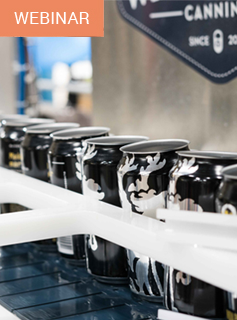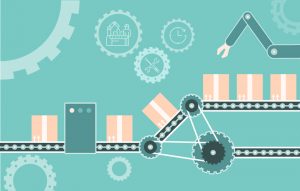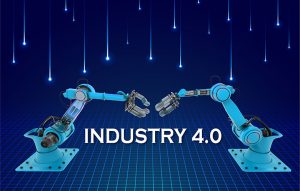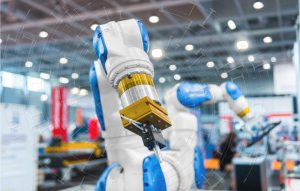Walk inside General Motors or Raytheon production facilities today. You will feel like you have stepped inside a clock. You can almost hear the ticking.
- With the workforce of 30,000+ robots and 180,000 people, General Motors (GM) is producing 27,400 cars per day. The secret ingredient is ‘avoiding unscheduled downtime’ by connecting about a quarter of its factory robots to the internet.
- Raytheon Corp. implemented a system which monitors even its assembly operations down to the turn of a screw. It’s like if a screw turns 14 times but is only turned 12, it is too loose. If it turns 15 times, then it is too tight. If a screw is not turned the right number of times, production stops and the computer dashboard flashes an error message.
The list can just go on about how much ‘smarter’ factories are becoming today.
“You don’t create the Internet of Things as a stand-alone. Its value will come when it connects to all parts of the organization. That will lead to the transformation of the entire organization.” – Umeshwar Dayal, Senior Vice President and Senior Fellow (Information Research) at Hitachi America Ltd, Global Center for Social Innovation, North America.
So in this blog post, we will show which parts of the manufacturing facility, when connected, can make any factory a ‘smart factory’.

How Industry 4.0 is a game changer for factory owners
Webinar agenda
- How Industry 4.0 is a game changer
- The role of IoT and data analytics in the manufacturing industry
- IT/OT Convergence: Why it’s important for IoT adoption
- Current market trends and value
- Smart factory: The evolution not revolution
- Demo and review of smart production line monitoring
- Q&A session
1. Equipment
When we think of textile mills or automotive assembly plants, pharmaceutical products manufacturers or defense contractors; inadvertently we first think of machinery. But as the adage goes, you can’t improve what you can’t measure. That’s why factories that become smarter today measure three things about their equipment: availability, performance, and quality because they together determine overall equipment effectiveness (OEE). An OEE score of 100% means you are manufacturing with 100% Quality (only good parts), 100% Performance (as fast as possible), and 100% Availability (no stop time).
OEE is the gold standard for measuring manufacturing productivity. Now the question is can IoT help my production facility to take manufacturing productivity at its peak? The following table will help you to understand, “how?”
| Equipment failure causes unplanned stops which not only reduces asset availability but also demands higher fixing costs. However, with IoT implementation, manufacturers can ensure equipment availability all the time. For that, factories retrofit existing equipment with sensors and increase visibility into its condition so maintenance can be scheduled pro-actively. Here’re the 10 must-have sensors for creating a smart factory. | No matter the age of your equipment, keep them running to the best of their ability is one of the ideals of any company. Smart sensors will give manufacturers the real-time data of assets health, status, and issues. When combined with data analytics, the intelligent IoT sensors offer tangible value for manufacturing operations. With smart sensors, manufacturers will not only reduce asset failures but improve the performance of machines too.. | At present, maintenance of pieces of equipment is often preventive and time-based which may result in unexpected downtime or low-quality production. But now with IoT platform driven maintenance digitization, manufacturers can optimize workflow scheduling and ensure the equipment availability with peak performance based on actual equipment conditions. |
“Preventive maintenance is worth $0.33 a square foot with a return on investment of 545%.” – Wei Lin Koo, Vice President with JLL’s strategic consulting group.
2. Workforce
‘Get more in less time’ is on every manufacturer’s lips. Gone are the days when most management teams used to set goals and strategies to empower workforce to be more productive. Today, with IoT, industrial spaces around the world now blend workforce with intelligent machines that work collaboratively and dynamically to increase efficiency and productivity. Two years back, in a human-machine study conducted by MIT researchers at a BMW factory, it was shown that the collaboration between humans and robots reduced human idle time by 85%. There are chiefly three ways in which IoT technology can enhance workforce efficiency and productivity:
| An automated machine speeds up the production time as no thinking is needed by the machine, meaning better repeatability and an increase in accuracy. There is also a less human error, leading to higher volume production which, in turn, increases profitability. Overall such human-robot collaboration can increase production capacity by 20% while lowering material consumption by 4%. | Real-time data and insight fed to an operator exactly when he needs, improving efficiency and productivity. Wearables that are best suited for industrial applications, including Google Glass, Vuzix, Epson AR smart glasses, and Daqri’s smart helmet enable engineers and technicians to access information from mobile devices and the cloud, allowing them to take quick decisions and to perform hands-free operations in the field. | Driven by changing customer demands and evolving technology, the world is moving from mass production to mass customization where flexibility to respond to individual customization is critical. Hence, only dynamic scheduling systems supported by ‘real-time visualization’ and ‘what-if scenarios’ can maximize manufacturers’ assets utilization, increase on-time delivery rate, and improve operational efficiency. |
3. Supply Chain Management
To achieve a truly successful outcome of the smart factory, what happens within the four walls of a factory needs to link with what happens across the entire supply chain network. Therefore, shifting from linear, sequential supply chain operations to an interconnected system of supply operations could lay the basis for smart factories to compete in the future. By leveraging the IoT, executives of your manufacturing facility will be able to see where performance is weak and where it’s strong, allowing them to make smart strategic decisions. There are three key stages which help manufacturers to make smarter, more responsive, and better informed decisions about their supply chains.
| Barcodes, RFID, GPS, and other sensors have been used to help connect supply chain operations and move goods across the hands of suppliers, service providers, carriers, warehouses, etc., nearly in real-time. Such data can provide plant operators real-time tracking insights and ultimately enabling them to process raw materials efficiently to the finished product. | The integrating effect of data obtained by the real-time visibility of materials across the entire supply chain – procurement, contract negotiation, production scheduling, collaborative planning, procure-to-pay, and transportation management with ERP systems contribute directly to reduce supply chain costs and increase agility for companies active in the supply chain network. | Tesco, the largest retailer in the UK, saves £100 million a year with supply chain analytics. Tesco uses extremely detailed weather forecasts to assure the right amounts of specific products availability for certain conditions in its 3,000+ stores. Likewise, with additional external data such as price volatility, traffic conditions, and potential strikes manufacturers will be able to able to identify and predict what materials they need at the right time. |
Ultimately, the application of intelligence at the factory level will allow manufacturers to do more than just upgrading their equipment and eliminate inefficiencies to increase their operational effectiveness (like GM). The ability to use the data will also give the freedom to manufacturers to make the right strategic decisions (like Tesco), to reinvent their business model (like Raytheon) and to maintain a competitive advantage in an ever-more complicated and rapidly shifting manufacturing market of the future.
Though 76% of manufacturers either have a smart factory initiative that is ongoing or are working on formulating it, only 14% of companies are satisfied with their level of success. – Capgemini’s Digital Transformation Institute (DTI).
To be satisfied with your investment in a smart factory capability, you can surely rely on our expertise.








